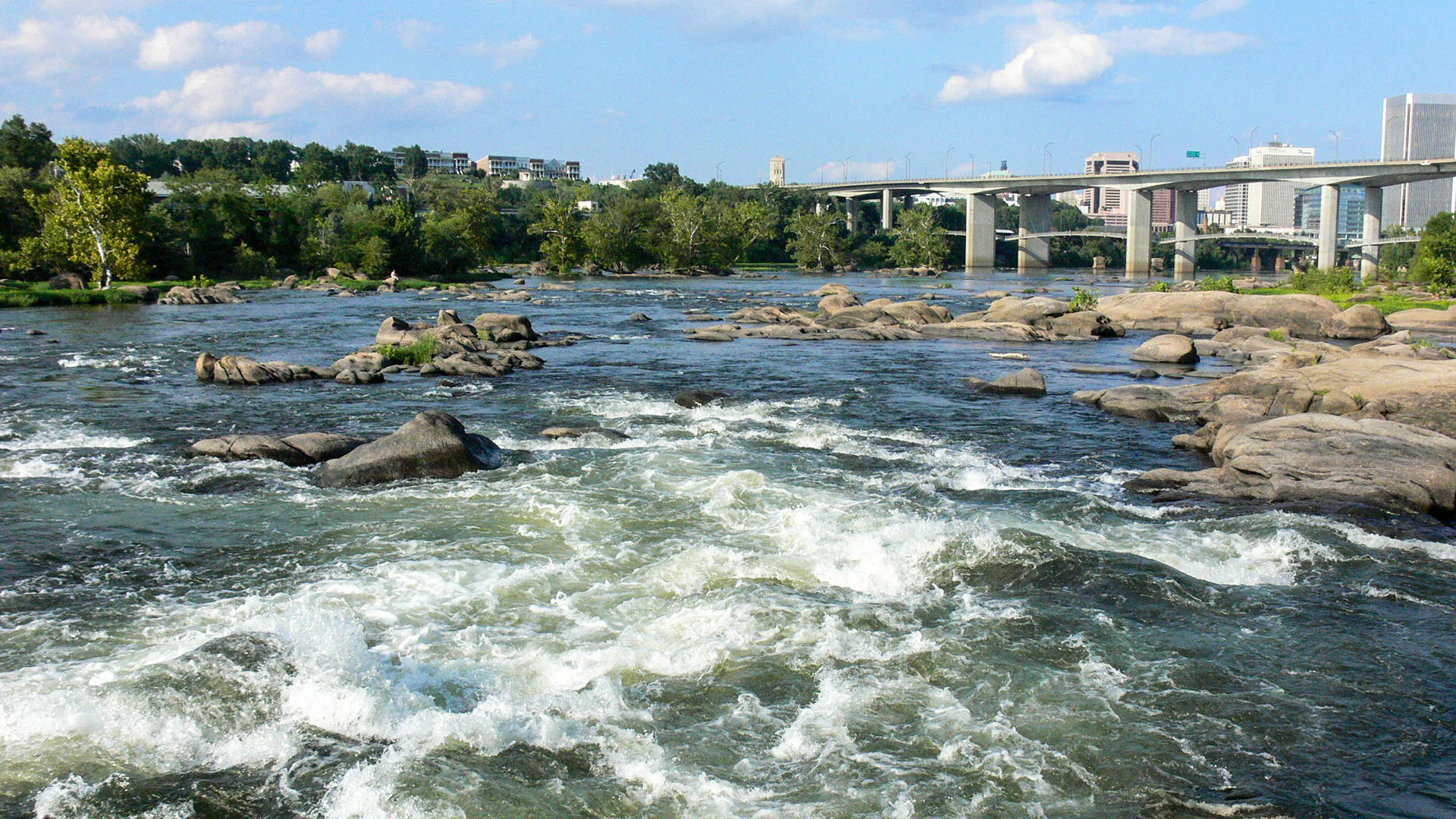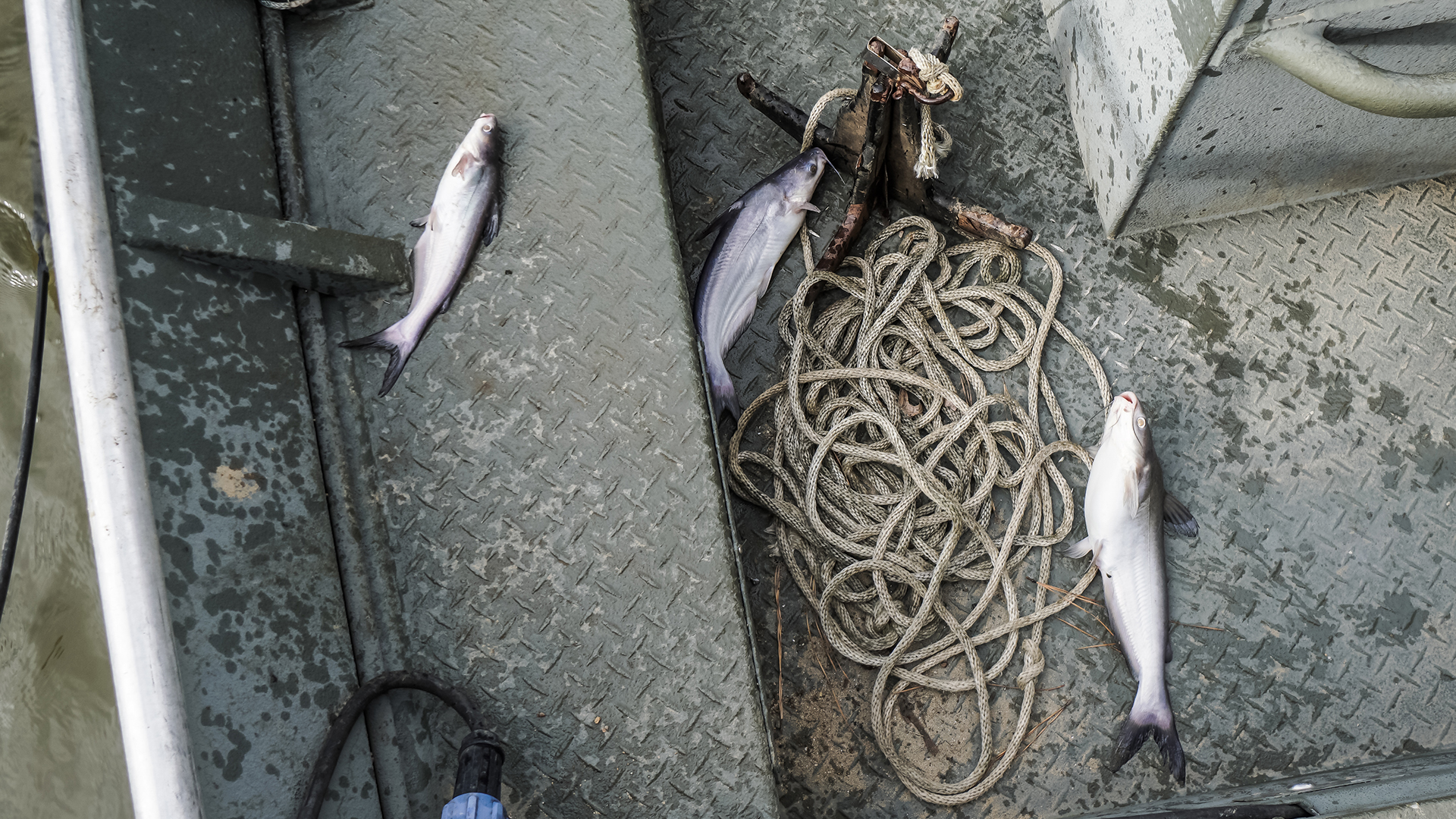One possible solution that has been explored is to develop a larger commercial fishery, but the local public may be hesitant to eat their way out of the problem. Kepone is still found in two-thirds of striped bass and white perch fish sampled in the Bay, more than 40 years after the dumping stopped, but at levels less than the “action limit,” set by the U.S. Food and Drug Administration—the amount of poisonous or harmful substances allowed in food. Most of the kepone left in the river lies across the bottom, attached to sediment.
Many, however, agree that it is safe to eat the small blues, the focus of the commercial fishery. They tend to be younger and less likely to have accumulated harmful chemicals, like the toxic, manmade, organic compounds, polychlorinated biphenyls (PCBs) and kepone. “I would eat blue catfish from the Mattaponi and Pamunkey Rivers,” adds Schmitt.
DISAPPEARING GIANTS
But what about the big blues, those coveted behemoths?
They’re getting harder to find, according to some recreational anglers, which follows the usual patterns of invasion ecology. The first “boom” of a species emphasizes a few individuals, allowing for organisms like the blue catfish to grow quite large. As the population grows dense, the size of the individuals tends to decline, making it harder to find the trophy-sized cats. But that isn’t the only reason the giants are disappearing.


